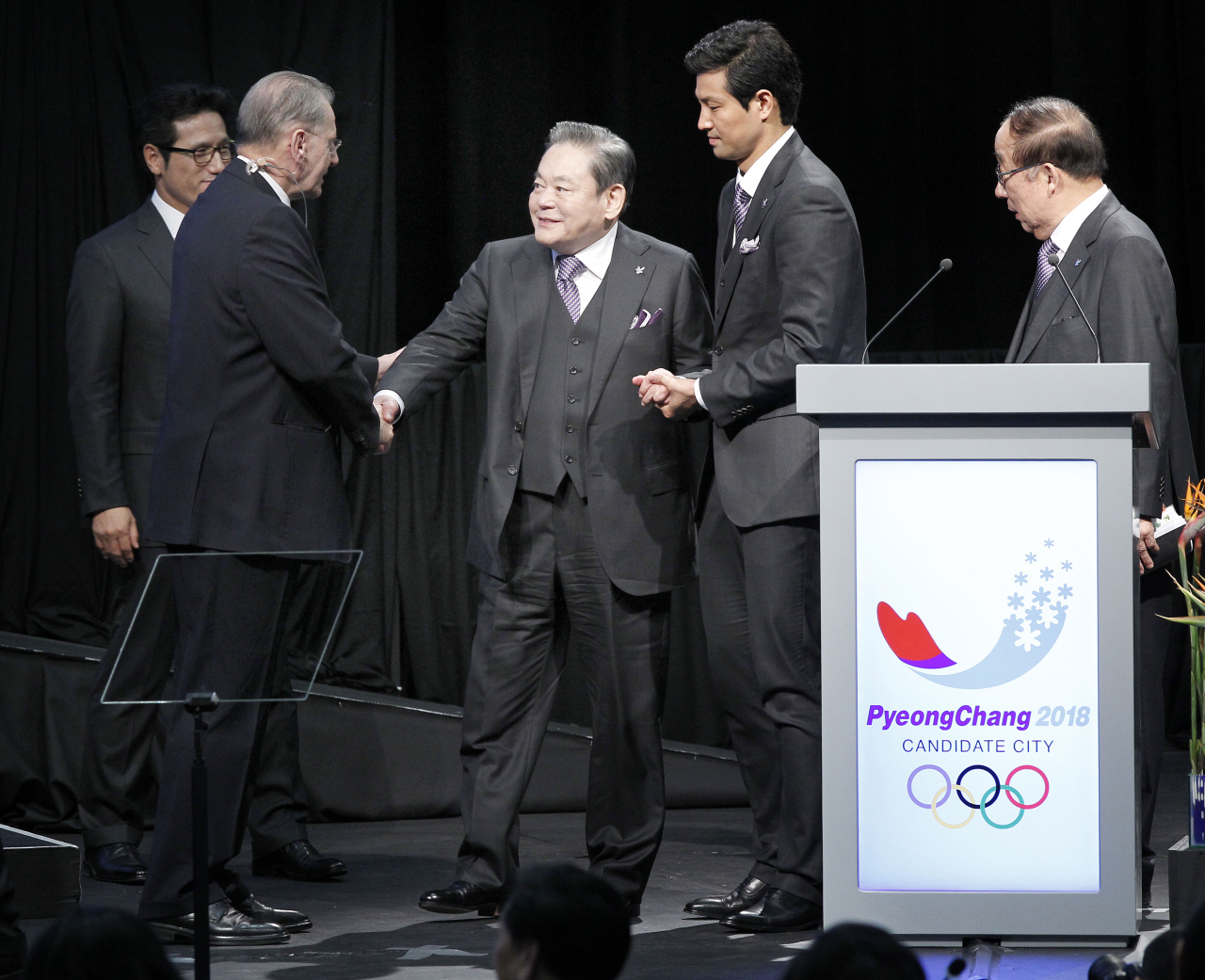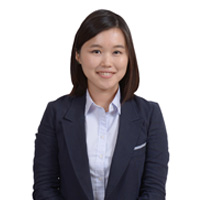Lee’s weighty legacy in arts, sports and even inter-Korean relations
By Ahn Sung-miPublished : Oct. 25, 2020 - 19:44

Samsung Group Chairman Lee Kun-hee was one of South Korea’s most prominent patrons of sports and the arts. His scope of influence even extended to inter-Korean relations.
In the sports world, the Samsung tycoon is best remembered for two key positions he held -- owner of the professional baseball team the Samsung Lions and member of the International Olympic Committee from 1996 to 2017.
But his interest and investment in sports went well beyond that. Under his leadership, Samsung owned professional baseball, soccer, basketball and volleyball teams. It also owned amateur wrestling, table tennis, badminton, taekwondo, and track and field teams.
Upon being elected as a member of the International Olympic Committee in 1996, Lee engaged in sports diplomacy for the country and his company. Samsung Electronics forged its Olympic marketing partnership deal with the IOC to promote its brand on the global stage.
Lee played a key role in helping PyeongChang, Gangwon Province, host the 2018 Winter Olympic Games by making good use of his network.
Following his heart attack, Lee resigned from the IOC and became an honorary member of the organization.
The late business mogul also had a keen interest in supporting the arts, and was known as an “avid collector of cultural assets.”
He possessed some 20 national treasures, including “Inwang Jesaekdo,” a painting by Jeong Seon, a legendary landscape painter in the Joseon Dynasty.
His art collection, consisting of traditional and contemporary art from Korea as well as contemporary works from around the world, has been displayed at the Leeum Samsung Museum of Art and the Hoam Art Museum.
Driven by Lee’s initiative, the Leeum Samsung Museum of Art was established in 2004 in Seoul’s Hannam-dong. Three internationally acclaimed architects -- Switzerland’s Mario Botta, France’s Jean Nouvel and the Netherlands’ Rem Koolhass -- collaborated to design the building, which embodied the beauty of Korean porcelain.
He also sponsored video artist Paik Nam-june, who died in 2006.
Since they signed an official sponsorship contract in 1987, Paik started to use Samsung’s television sets for his installations. Paik’s monumental media work “The More the Better,” composed of 1,003 monitors, was one of them.
Lee had a great interest in the country’s business ties with North Korea.
The conglomerate began reviewing the prospects of making inroads into the reclusive regime in 1995, when Lee urged Samsung officials to take the initiative in cross-border exchanges.
When the late former President Kim Dae-jung took office in 1998 and began promoting engagement with the North, Samsung expedited its North Korea initiatives.
In 2000 Samsung, along with LG Electronics, produced televisions at a plant near the Taedong River in Pyongyang. The production process was far from efficient, as TV parts had to be shipped from here to the North to be assembled, then the finished products had to be sent back to the South. The plant rolled out 20,000-30,000 units a year, a minimal amount considering the company’s TV production level at the time was 2.5 million units a year. But Samsung put more emphasis on the symbolism of entering the North, and less on profit.
Samsung also sent color televisions with its logo to North Korea. They were installed in the North’s landmark hotels, including the lobby of the Koryo Hotel in Pyongyang.
During this time Pyongyang-made telephones, radios and cassette players appeared in the South Korean market.
The tech giant also developed new software with the North, injecting funds to launch a joint software development center with North Korea’s Korea Computer Center in Beijing in 2000.
The following year, Samsung sold Pyongyang-developed games and software here as well.
Besides technology, the conglomerate jumped into the textile business through its affiliate Cheil Industries. Beginning in 1992, Cheil outsourced some of its garment production to the North, posting revenue of $10 million to 15 million.
In 2005, North Korean dancer Cho Myung-ae even appeared alongside South Korean pop star Lee Hyo-ri in a TV commercial for Samsung’s popular Anycall cellphones.
But Samsung’s North Korea business was short-lived. It came to a halt in 2010 on severed inter-Korean ties after the North sank the South Korean warship Cheonan.
By Park Han-na and Ahn Sung-mi (hnpark@heraldcorp.com)(sahn@heraldcorp.com)
In the sports world, the Samsung tycoon is best remembered for two key positions he held -- owner of the professional baseball team the Samsung Lions and member of the International Olympic Committee from 1996 to 2017.
But his interest and investment in sports went well beyond that. Under his leadership, Samsung owned professional baseball, soccer, basketball and volleyball teams. It also owned amateur wrestling, table tennis, badminton, taekwondo, and track and field teams.
Upon being elected as a member of the International Olympic Committee in 1996, Lee engaged in sports diplomacy for the country and his company. Samsung Electronics forged its Olympic marketing partnership deal with the IOC to promote its brand on the global stage.
Lee played a key role in helping PyeongChang, Gangwon Province, host the 2018 Winter Olympic Games by making good use of his network.
Following his heart attack, Lee resigned from the IOC and became an honorary member of the organization.
The late business mogul also had a keen interest in supporting the arts, and was known as an “avid collector of cultural assets.”
He possessed some 20 national treasures, including “Inwang Jesaekdo,” a painting by Jeong Seon, a legendary landscape painter in the Joseon Dynasty.
His art collection, consisting of traditional and contemporary art from Korea as well as contemporary works from around the world, has been displayed at the Leeum Samsung Museum of Art and the Hoam Art Museum.
Driven by Lee’s initiative, the Leeum Samsung Museum of Art was established in 2004 in Seoul’s Hannam-dong. Three internationally acclaimed architects -- Switzerland’s Mario Botta, France’s Jean Nouvel and the Netherlands’ Rem Koolhass -- collaborated to design the building, which embodied the beauty of Korean porcelain.
He also sponsored video artist Paik Nam-june, who died in 2006.
Since they signed an official sponsorship contract in 1987, Paik started to use Samsung’s television sets for his installations. Paik’s monumental media work “The More the Better,” composed of 1,003 monitors, was one of them.
Lee had a great interest in the country’s business ties with North Korea.
The conglomerate began reviewing the prospects of making inroads into the reclusive regime in 1995, when Lee urged Samsung officials to take the initiative in cross-border exchanges.
When the late former President Kim Dae-jung took office in 1998 and began promoting engagement with the North, Samsung expedited its North Korea initiatives.
In 2000 Samsung, along with LG Electronics, produced televisions at a plant near the Taedong River in Pyongyang. The production process was far from efficient, as TV parts had to be shipped from here to the North to be assembled, then the finished products had to be sent back to the South. The plant rolled out 20,000-30,000 units a year, a minimal amount considering the company’s TV production level at the time was 2.5 million units a year. But Samsung put more emphasis on the symbolism of entering the North, and less on profit.
Samsung also sent color televisions with its logo to North Korea. They were installed in the North’s landmark hotels, including the lobby of the Koryo Hotel in Pyongyang.
During this time Pyongyang-made telephones, radios and cassette players appeared in the South Korean market.
The tech giant also developed new software with the North, injecting funds to launch a joint software development center with North Korea’s Korea Computer Center in Beijing in 2000.
The following year, Samsung sold Pyongyang-developed games and software here as well.
Besides technology, the conglomerate jumped into the textile business through its affiliate Cheil Industries. Beginning in 1992, Cheil outsourced some of its garment production to the North, posting revenue of $10 million to 15 million.
In 2005, North Korean dancer Cho Myung-ae even appeared alongside South Korean pop star Lee Hyo-ri in a TV commercial for Samsung’s popular Anycall cellphones.
But Samsung’s North Korea business was short-lived. It came to a halt in 2010 on severed inter-Korean ties after the North sank the South Korean warship Cheonan.
By Park Han-na and Ahn Sung-mi (hnpark@heraldcorp.com)(sahn@heraldcorp.com)







![[KH Explains] How should Korea adjust its trade defenses against Chinese EVs?](http://res.heraldm.com/phpwas/restmb_idxmake.php?idx=644&simg=/content/image/2024/04/15/20240415050562_0.jpg&u=20240415144419)











![[Today’s K-pop] Stray Kids to return soon: report](http://res.heraldm.com/phpwas/restmb_idxmake.php?idx=642&simg=/content/image/2024/04/16/20240416050713_0.jpg&u=)